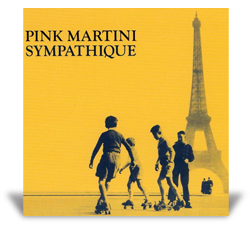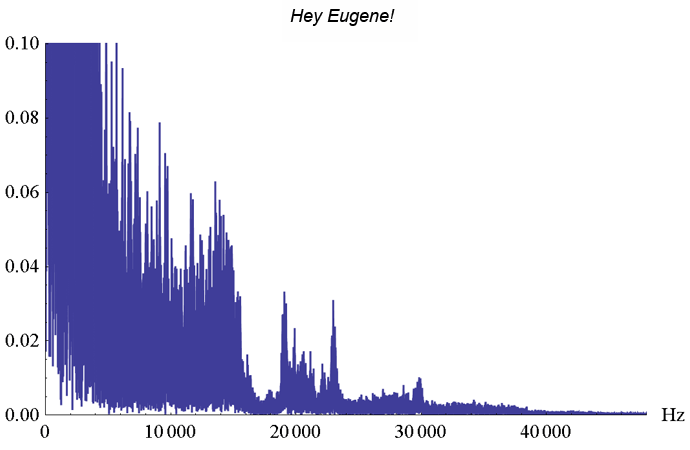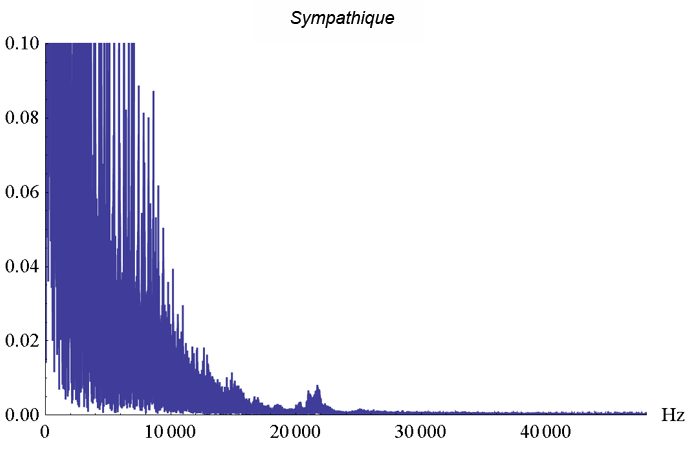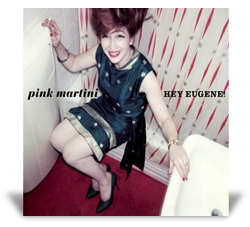 I used to think there were three distinct markets for vinyl. DJs not only want a particular type of music, they thoroughly abuse their records, which therefore need to be cheap; sound quality is not a top priority, when it’s considered at all. The second market is those who are interested in vinyl for reasons of nostalgia: wanting old recordings on vinyl, or new recordings with a retro flair. This group is also usually not terribly concerned with sound quality. The third group, the one in which I place myself, wants vinyl primarily on the basis of sound quality and, to a lesser extent, for some aesthetic appeal. It can sometimes be difficult to tell at which of the latter two groups a particular vinyl release is targeted. Price is usually a good indicator -- vinylphiles will pay $30 to $50 for an album, but I think that very few people interested in vinyl solely for reasons of nostalgia would do so. Most expensive releases do sound good, but there are also some nice-sounding LPs to be had at more reasonable prices. Certain record labels or mastering engineers also tend to be known for releasing good-sounding LPs. But there are no guarantees.
I used to think there were three distinct markets for vinyl. DJs not only want a particular type of music, they thoroughly abuse their records, which therefore need to be cheap; sound quality is not a top priority, when it’s considered at all. The second market is those who are interested in vinyl for reasons of nostalgia: wanting old recordings on vinyl, or new recordings with a retro flair. This group is also usually not terribly concerned with sound quality. The third group, the one in which I place myself, wants vinyl primarily on the basis of sound quality and, to a lesser extent, for some aesthetic appeal. It can sometimes be difficult to tell at which of the latter two groups a particular vinyl release is targeted. Price is usually a good indicator -- vinylphiles will pay $30 to $50 for an album, but I think that very few people interested in vinyl solely for reasons of nostalgia would do so. Most expensive releases do sound good, but there are also some nice-sounding LPs to be had at more reasonable prices. Certain record labels or mastering engineers also tend to be known for releasing good-sounding LPs. But there are no guarantees.
The group Pink Martini has been around for over a decade, but I hadn’t knowingly heard any of their music until last December, when they were promoting their new holiday album, Joy to the World, on NPR’s Weekend Edition. I’m not much into holiday albums, but I did like their sound, so I went looking for some of their other releases. I was pleasantly surprised to find three of them available on 180gm vinyl, and mastered by no less than Bernie Grundman. The first album I ordered was Hey Eugene!. I thoroughly enjoyed the music and the singing, and the sound was quite good. It sounded as if the source for the vinyl release was a high-resolution digital master. I generally prefer to hear recordings in their native formats, but since I couldn’t find any high-resolution digital edition of this album, I satisfied myself with the vinyl. It certainly sounded better than any CD I’ve ever heard. I then ordered Pink Martini’s first album, Sympathique. I liked the selections and the performances, but the lackluster sound seriously interfered with my overall enjoyment of the music.
What was the difference? The second disc I ordered, a reissue of an album first released in 1997, has the flat presentation and lopped-off high frequencies characteristic of a 44.1kHz digital recording, which is probably what it is. I trust my ears more than any measurement device, but I was curious to find out if what I was hearing was objectively demonstrable. I was in the process of reviewing the Furutech ADL GT40 at the time, which includes a 96kHz-capable analog-to-digital converter, so I recorded samples from each of the albums. To ensure that the greatest possible amount of high-frequency content was being recorded, I chose sections with a full complement of brass instruments playing. I then did a Fast Fourier Transform on the samples to determine their frequency content. You can clearly see in the graphs below that the sample from Hey Eugene! has significant frequency content well above 20kHz, and some stuff out to the limit of the ADC’s capabilities. Conversely, the frequency content of the sample from Sympathique abruptly cuts off at about 22kHz -- the frequency of the brick-wall filter employed in a 44.1kHz recording system.


It’s impossible to tell, solely on the basis of frequency analysis, whether the source for a record is analog or digital. If the recording is made direct-to-disc or from a high-quality master tape, it could have frequency extension out to 40 or even 50kHz. If a high-resolution digital source is used -- whether PCM or DSD -- the frequency spectrum could look very similar. On the other hand, the lack of frequency content above 20kHz doesn’t necessarily mean that the source was a 44.1kHz digital recording. Some microphones and tape systems -- particularly those used in the making of older recordings -- simply do not preserve that high-frequency information. The telltale sign of a 44.1 or 48kHz digital source is an abrupt falloff in the frequency spectrum at 22 or 24kHz, respectively. These brick-wall filters are responsible for many of the complaints about limited-resolution digital recording and playback.
 There are still albums being recorded to analog tape, and it makes sense for these to be released on vinyl. Since the 1990s, however, most recordings have been made digitally. Transferring a digital recording to vinyl decreases its fidelity, adding both noise and distortion. That doesn’t mean that digital recordings should never be released on vinyl. When properly mastered and played back on a good turntable, a vinyl release from a high-resolution digital source will sound significantly better than the CD release of the same album. In cases where there is no high-resolution digital release, the vinyl is the highest-resolution option available -- except when the original source was 44.1kHz or the vinyl has been cut from the CD master, in which cases the vinyl offers no sonic advantages over the CD.
There are still albums being recorded to analog tape, and it makes sense for these to be released on vinyl. Since the 1990s, however, most recordings have been made digitally. Transferring a digital recording to vinyl decreases its fidelity, adding both noise and distortion. That doesn’t mean that digital recordings should never be released on vinyl. When properly mastered and played back on a good turntable, a vinyl release from a high-resolution digital source will sound significantly better than the CD release of the same album. In cases where there is no high-resolution digital release, the vinyl is the highest-resolution option available -- except when the original source was 44.1kHz or the vinyl has been cut from the CD master, in which cases the vinyl offers no sonic advantages over the CD.
Why was Sympathique released on vinyl, anyway? Everything about Pink Martini -- from their sonic palette, to their selections, even their name -- is reminiscent of the 1950s. Clearly, releasing their music on vinyl is an extension of that retro aesthetic. I don’t have a problem with that, and these LPs were very reasonably priced, but I didn’t get what I was expecting. I think that record labels and, especially, retailers who cater to the audiophile community should explicitly state what sort of source master recording was used to make the vinyl releases. That will help audiophiles make better choices about which albums to buy, and result in fewer dissatisfied customers.
. . . S. Andrea Sundaram
andreas@soundstagenetwork.com






















